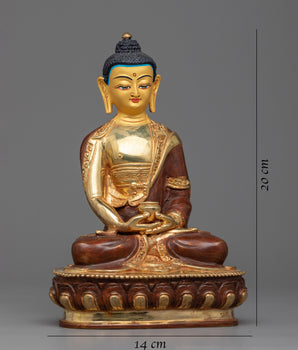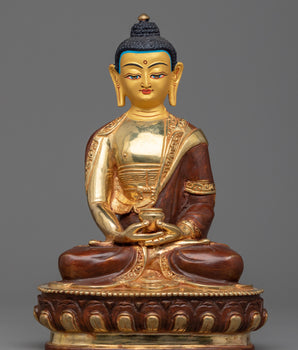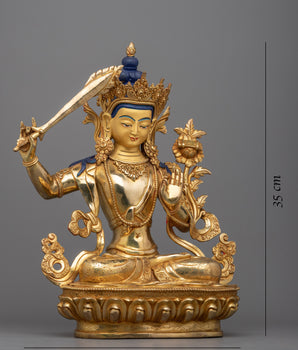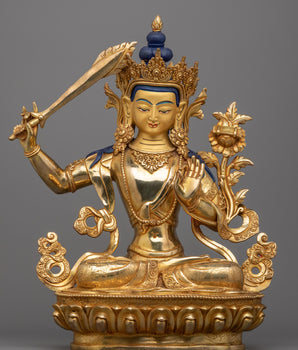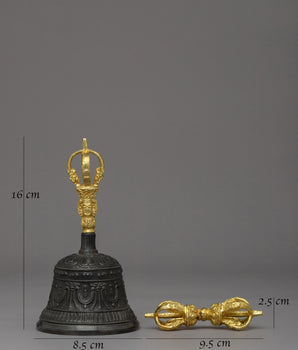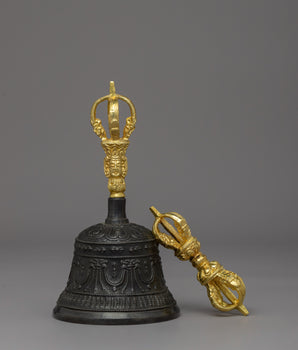A Classic Expression of Tibetan Culture
The cultural heritage of Tibet demonstrates outstanding religious power, an illustrious history, and distinctive artistic creativity. The extraordinary monasteries and celebratory festivals present every Tibetan cultural aspect as a harmonious expression of connection between nature, religion, and communal celebration. Furniture from Tibetan culture serves dual purposes and contains substantial value as well as traditional methods and symbolic meaning. The unique style and spiritual qualities of Tibetan furniture represent major components that help explain the Tibetan nation's cultural essence.
Cultural and Spiritual Significance of Tibetan Furniture

Tibetan furniture represents an expression of Tibetan cultural and spiritual beliefs, which developed Tibetan civilization throughout the centuries. The creation of Tibetan furniture happens through unifying traditional decoration techniques with painting methods alongside carving traditions to produce structures with exceptional designs and vibrant colors.
1. Connection with Tibetan Buddhism
Tibetan Buddhism stands as the foundation for all daily life practices in Tibet because the faith deeply connects with Tibetan furniture design. This traditional furniture design serves dual purposes of decoration and its religious and spiritual significance in this scenario. According to Tibetan people, the cultural heritage of Tibet is strengthened every time an ethnic feature portrays its religious and traditional furniture designs.
Greater spiritual importance resides in Tibetan furniture when placed in palaces or temples. The religious furniture designed for sacred application functions to express Tibetan Buddhist beliefs about harmony, enlightenment, and devotion. Symbolic elements present in furniture include the lotus flower for purity and enlightenment, with endless knots linking everything together, and the double dorje for spiritual power. The listed symbols deliver theological interpretations that affirm how the human-made items maintain a connection to sacred energies.
Tibetan monasteries and temples consider most items of furniture to possess sacred value. Tibetan thrones designed for spiritual leaders embody their dual religious position as well as their royal position through their grand design. In sacred buildings Tibetan furniture displays its spiritual force because each item works to unite physical existence with spiritual planes.
2. The Role of Colors and Decorative Techniques
Tibetan furniture receives its meaning beyond aesthetics because it uses vibrant colors together with exquisite decorations that represent spiritual principles. Tibetan furniture commonly displays colors of red, yellow, blue and gold which hold particular symbolic meanings. Red furniture symbols protection and strength, yellow furniture means wealth together with successful fortune. Sky-pure blue signifies divine power through its connotation with gold.
The elaborate artistry and design methods of Tibetan furniture originate from established Tibetan traditional arts. Tibetan artisans conduct meticulous hand-carving operations to duplicate religious symbolism from traditional beliefs using images of deities, together with animals and holy geometric designs. Motifs not only look beautiful in decorative spaces, but they also actively protect the family and provide them with good luck and divine blessings at the same time.
3. Connection with Tibetan Architecture
Tibetan furniture demonstrates two functional uses; it serves both decorative and architectural purposes, through which Tibetan religious values become visible. The artisans use natural materials to work with human creative skills, along with sacred symbols that merge into functional sacred structures inside homes, temples, and palaces. Tibetan furniture, together with architecture, expresses roundedness through dedicated spiritual worth and dense solidity.
The furniture Creator uses wood and natural dyes alongside metals in their production, creating a significant connection between this craftsmanship and Tibetan spiritual nature. The visual relationship between Tibetan architecture and furniture exists through decorative motifs and artistic carving that show sacred symbols, including the lotus flower and conch shell, plus the endless knot among mythical creatures. A single visual and spiritual environment strengthens both spiritual practices while conserving traditional cultural traditions. The spatial environment itself carries on through Tibetan furniture by reflecting both the structural shape of buildings and their spiritual character, their cultural aesthetic essence. Through this cooperative linkage, architecture gains elevation to turn both residential and temple places into spiritual spaces that maintain cultural and religious beliefs.
Material and Craftsmanship for Tibetan Furniture

Traditional Tibetan furniture combines wood as its main component while making use of natural materials for its production. The furniture makers use wood from nearby forests when producing their pieces so each craft item retains strong ties to the land and natural environment. Learning the complex techniques of furniture creation happens over several years as skilled artisans continue to follow traditional family inheritance.
Woodworking Techniques
The trademark of Tibetan furniture includes its durable construction as well as its ability to endure for extended periods. Artisans spend time selecting the appropriate wood between pine and cedar since the construction demands durable materials. The specialized woodworking practices require professionals to execute detailed hand-carving and painting work before final finishing steps. Complex artworks on several pieces consist of intricate embellishments that hold profound spiritual and cultural value.
Hand-Painted Decorations
The primary distinctive aspect of Tibetan woodworking is its hand-drawn decorative elements. Traditional motifs in Tibetan furniture exist because artisans perform hand painting on each piece. The decorative designs on furniture consist of dynamic patterns and sacred animals as well as divine figures alongside religious emblems. The colorful designs strike a dual purpose of improving furniture appearance while conveying essential spiritual and cultural traditions from Tibetan civilization.
Classification of Tibetan Furniture
Traditional Tibetan homes contain diverse furnishings that represent distinct functions, but exhibit particular furniture types that remain common for their specific purposes.
Tibetan Cabinets

Among the most recognizable items of Tibetan furniture stands the traditional cabinet, which the Tibetans call Khok. Kellogg functions as a holy storage units that contain religious items besides daily usage articles. A quality wooden carvings with vibrant colors on Tibetan wooden structures demonstrate both artistic abilities and Tibetan spiritual beliefs. More than homes throughout Tibet display these pieces because people agree they bring good luck, together with financial success.
Chests and Storage Boxes
Storage boxes which Tibetans refer to as chests usually appear large with elaborate decorations for keeping clothing and valuable objects. Embellished chests serve both practical purposes while functioning as tribal signs to represent ancestral legacies. Heritage in Tibetan society attributes great value to family heirloom wooden chests that pass from one generation to the next.
Cheema boxes
The Cheema box receives two internal segments with fried wheat grains placed in one and tsamba situated in the other section. Highland barley spikes, red spike flowers, and ghee flowers on top of the lid represent the wish for a long life, together with bountiful crops and good fortune. In the center of the box, a colorful arrow is added at the center to bring luck and good fortune.
Tibetan Tables
Traditional Tibetan architecture inspires Tibetan tables which exist as low and solid wooden pieces that align with the architectural preference for practical simplicity. Tibetan tables serve multiple functions because people use them at meals and religious ceremonies and for presenting both holy statues and worship offerings.
Niche for a Buddha Statue
A Buddha niche is a sacred space in Tibetan tradition, displaying peace and reverence. It is placed above eye level on a raised altar or brocade cabinet, often decorated with symbolic carvings. Natural wood, bold colors, and soft lighting create a serene atmosphere. Offering bowls, incense, or a butter lamp completes the space.
Throne Chairs
Tibetan Buddhism considers throne chairs to hold significant value among its traditional artifacts. High-ranking religious leaders, together with senior Buddhist monks, make use of these ceremonial chairs. The elaborate woodwork, along with proud features, communicates both spiritual leadership together with holy standing of those who occupy the seat.
Features of Tibetan Furniture

Tibetan furniture characterizes itself through meaningful symbolism along with bright visual design elements, plus a perfect blend of functionality with sacred intentions. Different pieces serve to present Tibetan life and values together with their artistic cultural history. The furnishings of Tibetan origin maintain their historical and religious connections while delivering attributes which bring value to contemporary interior spaces. A few key characteristics of Tibetan furniture can be recognized through its distinctive features between the ancient and contemporary periods.
1. Simple Yet Striking
The design style of Tibetan furniture extends from traditional Tibetan dwelling architecture through its squared dimensions and lack of curved components. The furniture designs implement geometrical arrangements while decorative elements buy into cultural meanings but avoid cluttering the design. The furniture items sit at floor level to match the architectural features of their origin.
2. Functional and Flexible
Brocade cabinets serve as Tibetan furnishings by offering decorative carving in addition to storage functionality, but maintain practical applicability. Different interior settings and personal choice influence the arrangement of modular furniture pieces that users can adapt and place as needed.
3. Vibrant and Alive
Tibetan furniture showcases its life through red, yellow, and brown colors despite its simple structure. Religious symbols form an integral part of decorative patterns, which are enriched by the addition of gold or silver details for a blend of conservative and elaborate visuals. The lively color choices convey the fusion of sacred vitality together with ethnic character.
Modern Influence of Tibetan Furniture
The traditional Tibetan furniture design remains active in its evolution through modern times. The combination of classic craftsmanship along with modern designs by artisans serves to attract international customers. Modern elements integrate into traditional furniture designs without altering the essential components that tie to Tibetan cultural values. The designs have gained increasing international popularity at a global level. Modern homes acquire warmth and peace together with character through their handmade components and bold colors, and symbolic patterns, which also bring a unique sense of personality. The increased demand for Tibetan furniture turned its exclusive status as an elite into an important, valuable cultural and economic product.
The handicraft industry of Tibet values Tibetan furniture as a vital component that supports both social peace and national economic advancement. It is crucial to protect the historical origins that lie within Tibetan furniture pieces. The artistic legacy of Tibetan history, along with the cultural heritage of Tibet, must receive proper transmission to forthcoming generations to safeguard this vivid artistic tradition.
Conclusion
Furniture in Tibetan design represents much more than ordinary household items; it represents a real performance of Tibetan historical, cultural, and religious practices. Each Tibetan piece relates a story about Tibetan people who maintain harmony between nature and religion with their cultural heritage through its symbolic value and vibrant colors, and handmade authenticity. Modern homes around the world adopt Tibetan furniture to connect historical moments with contemporary life. Resident acceptance of Tibetan furniture rises because it serves as artwork and a religious artifact, which supports traditional Tibetan handmade cultural and artifact production. The protection and promotion of this heritage remains an essential benefit to Tibet, ensuring a worldwide understanding of design that stems from deep wisdom and beauty throughout many centuries.










